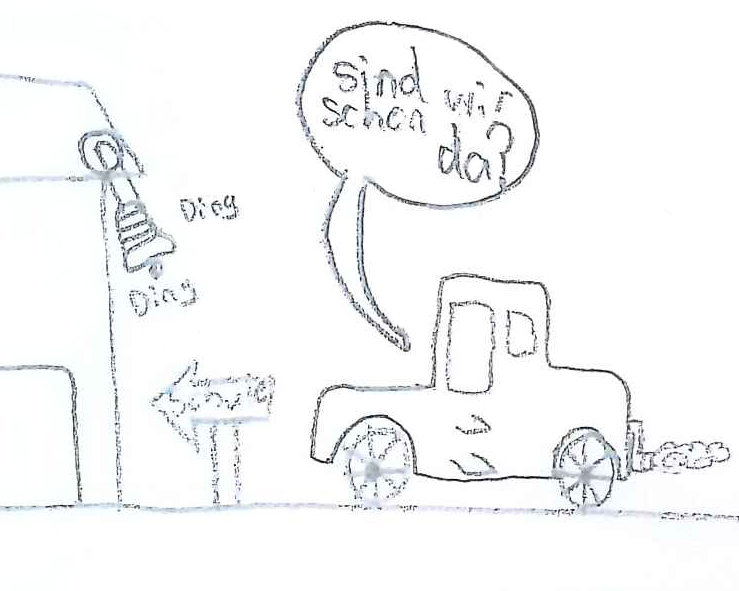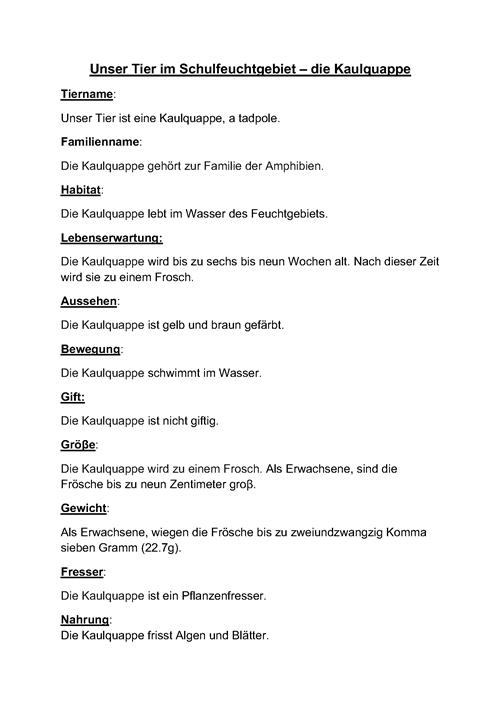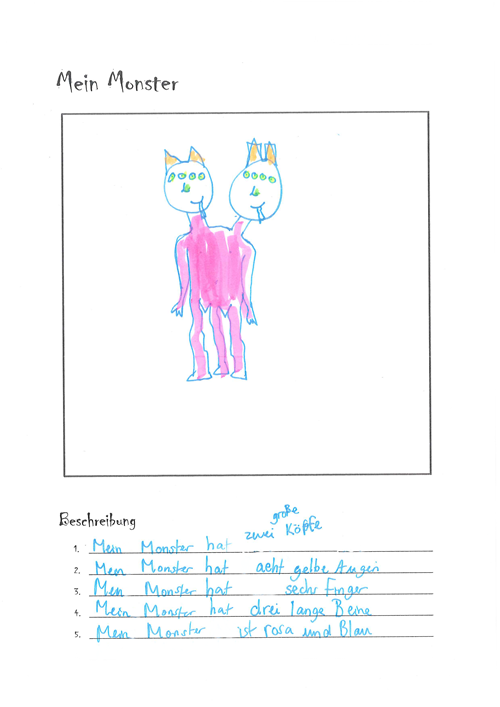Languages: German - Satisfactory - Years 5 and 6
Portfolio summary
This portfolio of student work shows that the student can use written and spoken German (WS1) for classroom interactions, to carry out transactions, and to share ideas and opinions (WS4), relate experiences and express feelings (WS2, WS3). The student uses complete sentences in familiar contexts (WS1, WS4) to ask questions, respond to requests and share experiences of learning (WS3). The student uses descriptive and expressive vocabulary, including adjectives, to express feelings and make statements (WS2, WS3, WS4). The student uses appropriate intonation for simple statements, questions and exclamations, and correct pronunciation (WS1, WS3). The student gathers and compares information from different sources about social and natural worlds, and conveys information and opinions in different formats to suit specific audiences and purposes (WS3). When creating texts, the student manipulates modelled language to describe current, recurring and future actions (WS1, WS2, WS4), and produces original sentences with common regular and irregular verbs in the present tense (WS3), including limited forms of modal verbs and some common separable verbs (WS1, WS2, WS4). The student uses adjectives (WS3, WS4), adverbs and adverbial phrases to qualify meaning (WS2, WS4). The student explains aspects of German language and culture, recognising that there are not always equivalent expressions in English (WS3). The student describes aspects of their intercultural interactions that are unfamiliar or uncomfortable, and discusses their own reactions and adjustments (WS3).
The student gives examples of how German language and culture are continuously changing and are influenced by other languages and cultures (WS3), and identifies and applies some of the systematic sentence structure and word order rules of German (WS1, WS2, WS3, WS4). The student identifies rules for pronunciation and applies phonic and grammatical knowledge to spell and write unfamiliar words (WS2, WS3, WS4). The student applies the conventions of commonly used text types (WS2, WS4), and identifies differences in language features and text structures (WS3). The student gives examples of the variety of ways German is used by different people in different contexts (WS3). The student makes connections between culture and language use (WS3).



